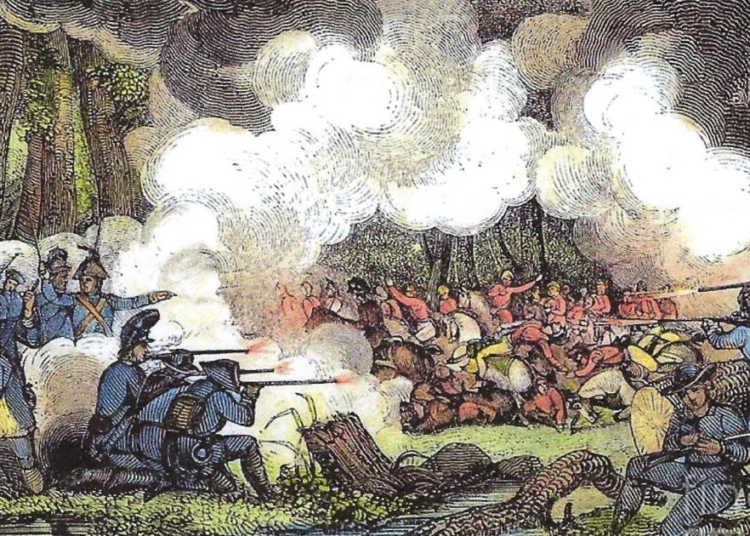This article explores the art of ambush in guerrilla warfare, discussing effective tactics for modern combat. Ambushes, a cornerstone of guerrilla tactics, rely on surprise and strategic planning to counter conventional forces. Thorough planning and reconnaissance are crucial before executing an ambush, as guerrilla fighters gather intelligence and identify ideal ambush sites. The choice of location, triggering mechanisms, and effective guerrilla tactics such as hit-and-run, ambush and harassment, and urban guerrilla warfare are discussed. The article concludes by emphasizing the need for ethical considerations in warfare and the continual evolution of ambush tactics in modern combat.
The Art of Ambush: Effective Guerrilla Tactics for Modern Combat
Introduction
Guerrilla warfare has been a prominent strategy used throughout history, and its effectiveness in combating conventional forces cannot be denied. Ambushes, in particular, have been a cornerstone of guerrilla tactics. The element of surprise combined with strategic planning makes them a formidable weapon for a smaller, less-equipped force. In this article, we will delve into the art of ambush, exploring its intricacies and discussing effective guerrilla tactics for modern combat.
Understanding Ambush
Ambushes are a tactical maneuver where an attacking force uses concealment and surprise to launch an offensive against unsuspecting adversaries. Guerrilla forces often utilize this technique to counter conventional armies that rely heavily on superior firepower and resources. The success of an ambush depends on meticulous planning, choosing the right location, and exploiting an opponent’s vulnerabilities.
Planning and Reconnaissance
Before executing an ambush, thorough planning is indispensable. Guerrilla fighters must pay close attention to detail, conducting extensive reconnaissance to gather intelligence about enemy movements, routes, and habits. This information helps in identifying ideal ambush sites and understanding the best ambush tactics to employ.
Choice of Location
Selecting the right location is crucial for successful ambushes. Factors such as terrain, vegetation, and human activity must be considered. Guerrilla forces often opt for areas with natural cover, such as dense forests, rocky outcrops, or urban environments. These provide optimal opportunities to conceal themselves and launch attacks before quickly disappearing.
Triggering Mechanism
Triggering mechanisms play a vital role in executing an ambush. Several options exist, including timed detonations, tripwires, or remote-controlled devices. The choice depends on the mission’s requirements, the available resources, and the desired level of engagement with the enemy.
Effective Guerrilla Tactics
While each engagement presents unique challenges, some tactics have proven to be effective in guerrilla warfare. Adaptation and flexibility are key, as guerrilla fighters must be able to operate with limited resources and constantly adjust their strategies to avoid detection. Here are a few effective tactics commonly employed:
Hit-and-Run
The hit-and-run tactic involves launching a surprise attack on the enemy and quickly retreating before they can effectively respond. By utilizing their knowledge of the terrain, guerrilla forces can evade capture and regroup for future engagements. This tactic aims to disrupt the enemy’s operations, demoralize their forces, and erode their capabilities over time.
Ambush and Harassment
Using ambushes alongside constant harassment can significantly wear down a superior force. By launching repeated attacks on supply lines, communication infrastructure, or key installations, guerrilla fighters can force the enemy to redirect resources towards protection and away from their main objectives. This tactic takes advantage of the enemy’s predictability and disrupts their logistical capabilities.
Urban Guerrilla Warfare
Modern warfare has seen an increase in urban environments becoming battlegrounds. Urban guerrilla warfare, therefore, presents a unique set of challenges and opportunities for guerrilla fighters. Using tactics like hit-and-run, small-scale ambushes, and blending among civilian populations, urban guerrilla warfare can disrupt enemy control, demoralize occupying forces, and limit their ability to effectively govern the area.
Conclusion
The art of ambush in guerrilla warfare is a powerful tool that allows smaller, less-equipped forces to challenge larger, conventional armies. Through meticulous planning, careful selection of locations, and the use of effective guerrilla tactics, ambushes can disrupt enemy operations, inflict casualties, and create a sense of fear and uncertainty among adversaries. However, it is essential to remember the ethical considerations of warfare and ensure that these tactics are used within the confines of international laws and regulations. The study of ambush tactics continues to evolve, with modern combat requiring guerrilla fighters to adapt and utilize innovative approaches to achieve their goals.












